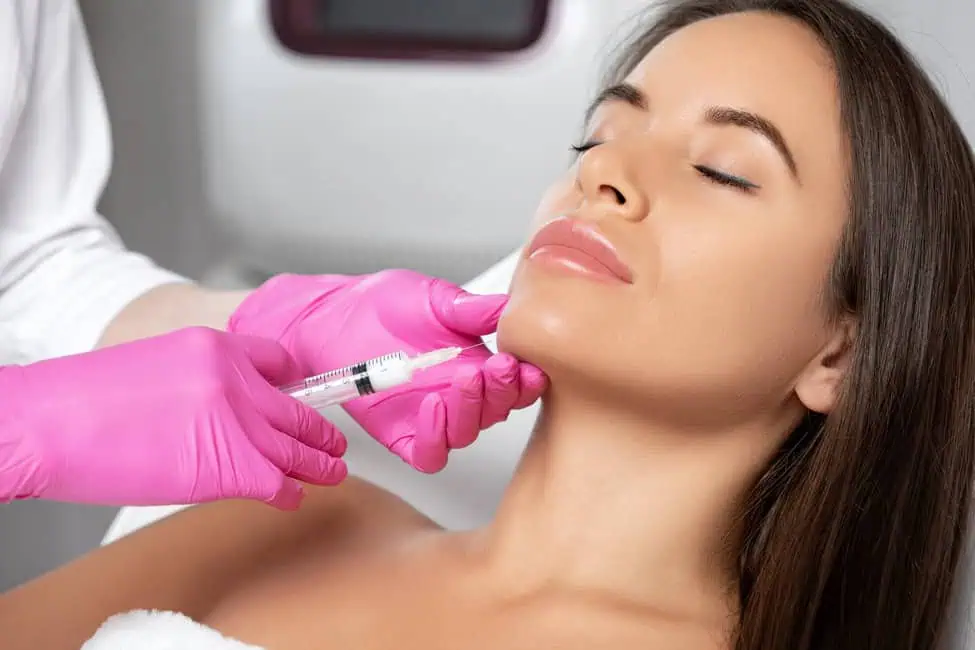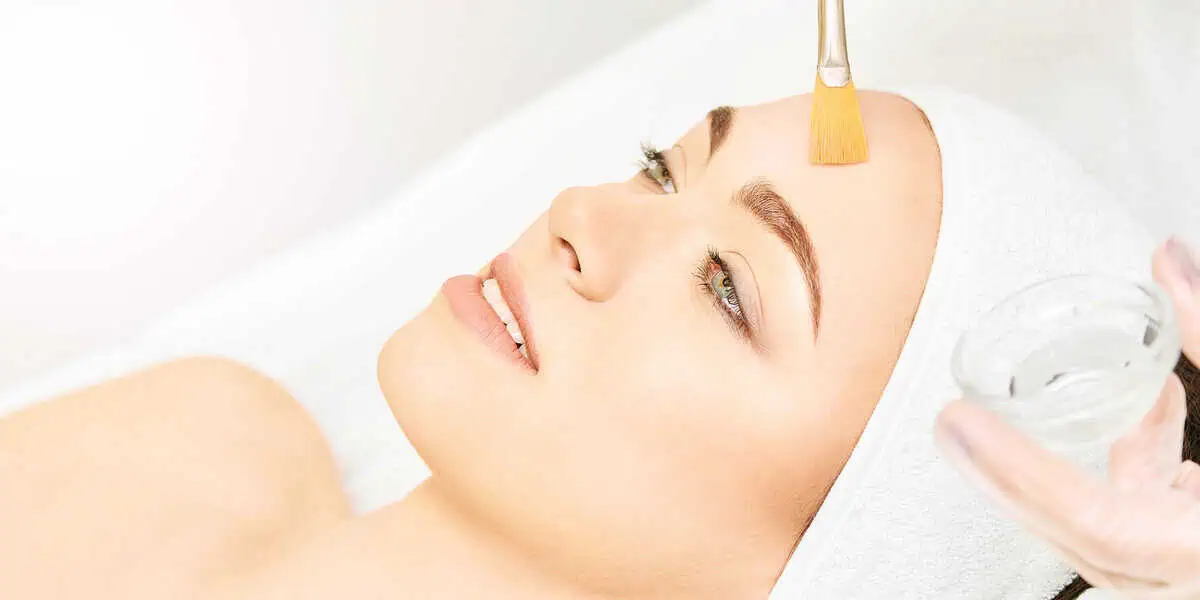
Achieving radiant, youthful skin is a common goal for many. Chemical peels offer a way to rejuvenate the skin by addressing issues like fine lines, acne scars, and hyperpigmentation. For those seeking to improve their skin’s appearance, this treatment is versatile and can be tailored to various skin types and concerns. Knowing the different types of chemical peels and their benefits can help you choose the right one to meet individual skin care needs.
What is a Chemical Peel?
Chemical peels are cosmetic treatments devised to enhance the appearance and texture of the skin. A chemical solution is spread to the skin, which breaks down the outermost layers, causing them to peel off over time. It reveals new, regenerated skin that is typically softer, smoother, and less wrinkled than the old skin.
Chemical peels will vary in strength and depth of penetration and are generally classified into three categories:
- Superficial Peels: These are the mildest chemical peels, using alpha-hydroxy acids (AHAs) or a mild acid to exfoliate only the uppermost layer of skin (epidermis). They are often used to improve the appearance of mild skin discoloration and rough skin and to refresh the face, neck, chest, or hands.
- Medium Peels: Medium peels aim at the outer and middle layers of the skin to vacate damaged cells. They often use trichloroacetic acid (TCA) and can treat age spots, fine lines, wrinkles, freckles, and moderate skin discoloration. They are also used to smooth rough skin and treat some precancerous skin growths.
- Deep Peels: These peels fully seep into the middle layer of the skin to vacate damaged skin cells. They often use phenol or a stronger concentration of TCA. Deep peels can treat moderate lines, age spots, freckles, and shallow scars. Because they are more intense, they are usually performed once and require a longer recovery period.
Types of Chemical Peels
Skin concerns can be addressed in various ways depending on the chemical peel. Obtaining advice from a skincare professional can help determine the best treatment options for a given individual’s skin type and needs.
Perfect Derma Peel
The Perfect Derma Peel is a medical-grade, medium-depth peel appropriate for all skin types and ethnicities. This peel is notable for its inclusion of glutathione, a powerful antioxidant that helps brighten the skin and combat signs of aging. The formulation also includes TCA (trichloroacetic acid), retinoic acid, salicylic acid, kojic acid, phenol, and vitamin C, which work together to improve skin clarity, tone, and texture. It is particularly effective for treating hyperpigmentation, melasma, acne scars, and fine lines. The application process is virtually painless and requires minimal downtime, with visible results in about a week.
VI Peel
The VI Peel is another popular medium-depth chemical peel. It is designed to enrich the skin’s texture, tone, and clarity while providing anti-aging benefits. The VI Peel combines TCA, retinoic acid, salicylic acid, phenol, and vitamin C, similar to the Perfect Derma Peel. This peel effectively treats fine lines, acne scars, sun damage, and hyperpigmentation. It also helps to facilitate collagen production, giving the skin a firmer, more youthful appearance. The VI Peel is known for its gentle approach, making it suitable for sensitive skin, with minimal discomfort and downtime.
BioRePeel
BioRePeel is a relatively newer addition to the range of chemical peels, known for its biostimulating, revitalizing, and peeling actions. It contains amino acids, vitamins, and other bio-stimulants that penetrate the skin to promote cell turnover and collagen production. The BioRePeel can be applied to the face, neck, and body and is suitable for all skin types. Skin texture is improved, fine lines are reduced, and skin tone is evened out while being rejuvenated. The treatment is quick, with little to no downtime, making it an attractive option for those seeking immediate results.
Chemical Peel Procedure
Knowing these steps helps us appreciate chemical peels’ controlled nature and ability to rejuvenate the skin effectively.
Preparation Before the Procedure
Before undergoing a chemical peel, your skincare professional will evaluate your skin to determine the most suitable type of peel based on your skin type and concerns. This involves a review of your medical history and any medications you are taking. You may be advised to:
- Avoid certain medications: Discontinue retinoids and other products that can increase skin sensitivity.
- Pre-treatment regimen: Use prescribed products like retinoids or bleaching agents to prepare the skin.
- Sun protection: Prevent hyperpigmentation post-peel by avoiding excessive sun exposure and using sunscreen.
During the Procedure
An in-office chemical peel typically takes place at a medical spa and consists of the following steps:
- Cleansing: Impurities and oils are removed from the skin during cleaning.
- Protection: Eyes and hair are protected to avoid accidental contact with the peel solution.
- Application of the Peel:
- Perfect Derma Peel: The chemical solution is applied using a brush, cotton ball, or gauze. The application is typically quick, taking about 15 minutes, and patients might feel a slight tingling or stinging sensation. The solution is left on the skin to work, and patients are given a take-home kit to manage post-peel care.
- VI Peel: This peel is also applied with a brush or similar applicator. A few minutes are required for spreading the solution evenly over the treatment area. Patients may feel a warm sensation followed by some stinging, which subsides as the solution dries. Post-peel care instructions are provided to ensure proper healing.
- BioRePeel: The peel is applied similarly to the other peels, using a brush or applicator to spread the solution evenly across the skin. This process is quick, and patients may feel a mild sensation during application. Immediate post-care steps are given to manage any initial discomfort and promote healing.
Post-Procedure Care
After the peel, the skin will undergo a healing process:
- Perfect Derma Peel: Expect mild redness and peeling similar to a sunburn, resolving within a few days.
- VI Peel: The skin will be red and swollen, and it may form crusts and peel off over a week. Sun protection and moisturizing are crucial.
- BioRePeel: Intense redness, swelling, and peeling lasting up to three weeks. Patients must avoid sun exposure for several months and adhere strictly to post-procedure care instructions provided by their dermatologist.
Post-treatment care typically includes:
- Moisturizing: Use of a gentle moisturizer to keep the skin hydrated.
- Sunscreen: Daily application of broad-spectrum sunscreen to protect the new skin.
- Avoiding irritants: Refrain from using exfoliants, retinoids, and other potentially irritating products until the skin fully heals.
Takeaway
Looking for a way to reveal a radiant and youthful glow on your skin? Fluid Hydration & Wellness offers top-tier chemical peels in Charlotte, NC, including the Perfect Derma Peel, VI Peel, and BioRePeel. You can expect premium results tailored to your skin type and concerns from our expert team.
Don’t wait to rejuvenate your skin! Schedule your consultation today to discover how a chemical peel in Charlotte, NC, can revitalize your complexion and boost your confidence. Contact Fluid Hydration & Wellness for your assessment and take the first phase towards healthier, more beautiful skin.






